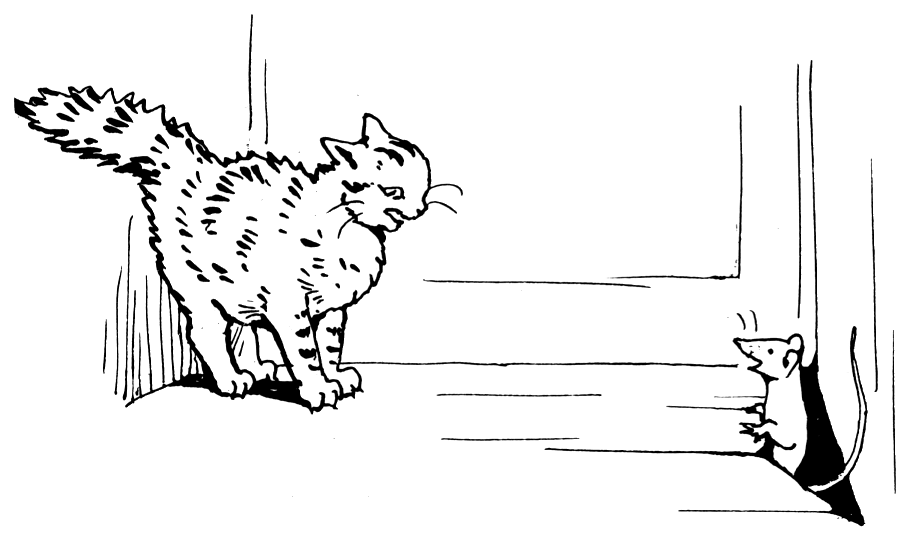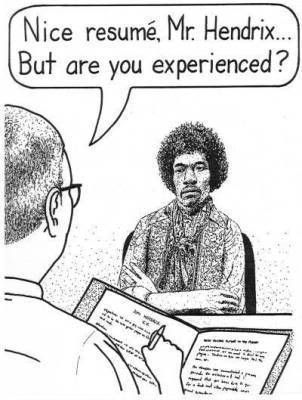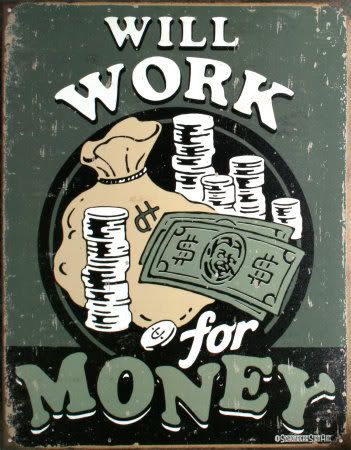Wednesday, April 30, 2008
Nation of Scaredy Cats

from "The Tale of Samuel Whiskers" by Beatrix Potter
I rarely do this, but what he said:
At the beginning of the 21st century, the typical American suburb is just about the safest place that has ever existed in the history of the world - yet it's full of terrified people.Statistics have little power in the face of a media environment in which extraordinarily rare events, such as strangers kidnapping children, are presented as commonplace by profit-hungry "news" outlets, for whom the bottom line is that fear sells.
Politicians realize this too. The ongoing overreaction to the 9/11 terrorist attacks is only the most vivid example of how our leaders cynically exploit our fears by making wildly exaggerated claims, such as that Islamic terrorism poses an "existential threat" to America.
Ain't it the truth? We're a nation of scaredy cats. No one knows how to assess risk (except for trained risk managers like me!). Selection bias (i.e., getting your "stats" from the TV news) is rampant. Chill out, America!
Labels: risk
Tuesday, April 29, 2008
Will Local Papers Become Extinct?
They talked about their children or their grandchildren not reading newspapers, they talked about terribly smart web-design kids, they got really excited about multimedia content which genuinely was exciting ten years go. Hell, Brian Greenspun of the Las Vegas Sun gave a long presentation a large part of which was devoted to recounting in excruciating detail how his website can be updated more than once a day as news comes in. Ted Olson talked about (really!) setting up a 15-member commission to look into all of this. This was a panel of dinosaurs, who are being driven by fear and necessity rather than vision.Brutal. Salmon's post is well worth a read (as is his blog as a whole). This shows again the wisdom of companies like Thomson Reuters.
Labels: Publishing business
Monday, April 28, 2008
Keynes on the Fed
 Boy, An Economist's Biography is the gift that keeps on giving. In 1931, Keynes visited the U.S., and met with a number of influential people (Hoover, Fed governors, etc.) to discuss the economy.
Boy, An Economist's Biography is the gift that keeps on giving. In 1931, Keynes visited the U.S., and met with a number of influential people (Hoover, Fed governors, etc.) to discuss the economy. He thought that the Federal Reserve might pursue an expansionist policy, but it might not carry it far enough. He did not expect "magical results". The reasons for his pessimism lay in the state of the American banking system [. . .] At the heart of the banking problem was the banks' balance sheets. Keynes estimated that at least 10 per cent of the banking system (measured by assets) was already insolvent [and that there was] the prospect of "more skeletons in their cupboards than anyone yet knows for certain" [referring to the large NYC banks].This sounds familiar, eh? Substitute "financial institutions" for "banks," and it describes the situation today.
But not really. The "skeletons" Keynes is talking about are reserves. His feeling was that the big banks and the average American saver were hoarding money, leading to a liquidity crisis that no reduction in rates could fix. Regional banks, which provided capital loans to business, were the ones being squeezed into insolvency. Obviously the problems today are that non-commercial banks carried too little in reserves (not being bound by the Basel Accords), and that no one trusts the values of the assets on financial institutions balance sheets, especially if those assets include CDOs and CMOs. Still, funny how apt his statement is. There are a lot of skeletons in banks' cupboards today, even if they are rather different than those of 1931.
Labels: economics
Sunday, April 27, 2008
Keynes on the Koran and Das Kapital
My feelings about Das Kapital are the same as my feelings about the Koran. I know it is historically important and I know that many people, not all of whom are idiots, find it a sort of Rock of Ages and continuing inspiration. Yet, when I look into it, it is inexplicable that it can have this effect. I am sure that its contemporary economic value (apart from occasional but inconstructive and discontinuous flashes of insight) is nil.Bizarrely prescient of him, given the way that radical Islam has replaced Communism as our official national bogey-man.
(Quoted in Maynard Keynes: An Economist's Biography by D.E. Moggridge.)
Labels: economics
Friday, April 25, 2008
Joan Fabian and the Hunting Prize

The Opposite of Peace, 2007, by Joan Fabian
This painting by Joan Fabian was entered into the into the Hunting Prize, where she was one of the artists on their "short list." As I understand it, that means she made it through the first round of judging, in which she had sent them a digital image of the piece, they decided they liked it, and asked for the original to be sent. She sent the piece to them, at considerable expense. At this point, she was disqualified. Why?
I contacted one of the jurors, who were going to chose pieces by viewing the actual works, and he said they never seen my piece. I called a representative of Hunting and she told me that they had nothing to do with the disqualification process and that it was the jurors that did the disqualifying because it wasn't a "painting".Way to dodge responsibility guys! Now this is admittedly a grey area. On the other hand, artists have been painting on shaped canvases and shaped pieces of wood for a long time, and if such a work was not a painting as far as the Hunting Prize is concerned, it should have been either 1) more clearly spelled out in the rules, or 2) disqualified when she sent the digital file in.
What is the Hunting Prize? It's an art prize given by Hunting PLC, an English oil services company. From 1981 to 2005, it was given in the U.K., but moved to Texas in 2006. The prize is astonishingly generous--$50,000.
So what's the big controversy? It has been suggested that the shaped wooden nature of the painting is not the problem, but the subject. In the jaundiced opinion of local art blog B.S. Houston, Hunting is a prize that exist for the purpose of "impressing very-very wealthy oil executives and their wives." He also points our that the sign up sheet requires you to acknowledge that
Any artwork that includes the use of bodily fluids, degradation of religion or government, and/or depiction of sexual acts or any other medium, presentation or topic objectionable to Hunting PLC will be automatically disqualified from the competition.So here's the possibly nefarious disqualification. Maybe the Hunting Prize people didn't see the word "WAR" when they got the digital file (I didn't see it at first, either), and when they opened the crate . . . whoops. (Why the word "WAR" should be offensive is another issue, but Hunting seems pretty damn sensitive about potential offense.)
What do I think? Well, whatever their reason for disqualifying the work, they did wrong by Joan Fabian, who went through a lot of expense to have a crate built for the piece and to ship it, at the request of the Hunting Prize. Also, the Hunting Prize folks need to loosen up a bit. And finally, impressing oil executives and their wives (and husbands) is worth doing--also educating them about art. If you are an artist trying to make a living from art in Texas, these people will be among your customers. So as an artist, you need to reach out to them in some way. They don't all have bad taste after all--Jean and Dominique DeMenil proved that.
For me, as a disinterested observer of this scene, I got introduced to an interesting artist. Joan Fabian's work reminds me of a stew of Jim Nutt, Lari Pittman, Elizabeth Murray, and Frank Stella. So on that note, let's close with another one of her paintings.

Playtime, 2005
Update: In the comments, an artist named Carlos tells a similar story:
I have also been given the boot by the HAP folks. The word that I got was that my work was too-3-D...This suggests the problem they had with Fabian's work was its three dimensionality, not its politics. But it also suggest the Hunting Prize folks didn't pay much attention to the digital files and information the artists submitted about their pieces. I wonder if any other painters who submitted "non-flat" works were rejected?
Yes, it is made up of objects and brakes the plane of the 2-d format. Yes,I did include all dimensions and materials used. Yes, I did spend a large amount of money to ship the work to Houston, Yes, I have to spend more money to get the work back.
2nd Update: You can see Carlos Cuevas' rejected piece here. It has a bit of an Ed Kienholz/Michael Tracy vibe, though without either of those two artists' intensity. B.S. Houston still thinks it was the "offensive" nature of the works that got them rejected. Cuevas's assemblage has some religious elements, but doesn't seem particularly offensive to me. (But the Hunting Art Prize people may be exceptionally sensitive to possible offense, for all I know.) At the same time, HAP must have been blind not to see that this was essentially a mixed media three dimensional work when they got the slide. Curiouser and curiouser!
(Welcome Glasstire readers!)
Labels: art
Wednesday, April 23, 2008
John Maynard Keynes' Publishing Deals

I'm reading John Maynard Keynes: An Economist's Biography by D.E. Moggridge, and this little fact jumped out at me:
On 26 July he offered the book, which he called The Economic Consequences of the Peace, to Macmillan, who accepted it two days later, although the terms changed over the ensuing weeks as Keynes was more optimistic than his publisher over the book's sales. Eventually he retained the American rights and published the book in England on a commission basis. He was to pay all the costs involved in producing, distributing and advertising the book and to keep all the profits after paying Macmillan a royalty. He was to publish on this basis for the rest of his life.This is, of course, the opposite of the usual publishing arrangement, wherein the publisher takes the risk on production and marketing, and in exchange pays the author a royalty for the right to use his or her content. But the fact that the latter is the normal agreement shows mainly how inflexible publishing is. In the early 90s, when Dark Horse Comics was experiencing some tight times, an editor there, Jerry Prosser, suggested offering this arrangement--in which Dark Horse would be, in effect, an a la carte provider of publishing services--to selected artists and writers. When the idea was rejected by management, he attempted to institute it on his own, secretly, which ultimately got him fired. I was a young editor at Dark Horse then, and I thought it was a very interesting, innovative notion. Little did I know that Keynes had published under the same arrangement more than 70 years earlier.
Labels: Publishing business
Monday, April 21, 2008
Early Economics Education
When I was 9 to 14, I went to a red-diaper-baby yiddishkeit summer camp called Kinderland. [...] They actually confiscated any treats your parents mailed you and redistributed them, equally, among your bunk! You know what that taught us? How to create black markets in candy. Socialism doesn’t even work on 10 year olds.
Labels: economics
Thursday, April 17, 2008
Give Up in EDO
This is from the website give up. Maybe you've seen some of this necessarily anonymous artist's work pasted up here and there around town. He's a highly creative street artist using posters and billboards placed presumably without permission hither and yon, all with the uplifting message, "Give up."
He has a show up at the Aerosol Warfare gallery. (I think the guy with the cowboy hat in the video is part of Aerosol Warfare.) Aerosol Warfare is a collective of legal graffiti artists. You may have seen this house on Alabama at Almeda they did:

Photo from HoustonSoReal.
So, the question is, how did I not know these guys had their own gallery?! I guess that means I'm old now.
(All of this via Neon Poisoning.)
Labels: art, Houston Streets
Thomson: Publishing Mutates into Information Trafficking

I'm someone who worked in publishing for a long time, but a few years ago I decided that publishing (of things printed on paper) was a business that was inevitably shrinking. This is not because we are living in some post-literate moment (that may come, I guess, but not yet), but because publishing with pixels is just so much cheaper than publishing with paper. So much cheaper, in fact, that the entire profit model has to be completely changed. Hence the importance of search engines. In old paper publishing, the equivalent of search engines existed (primarily in services sold to libraries), but they were necessarily a small part of the entire industry. Similarly, even though in old publishing and new publishing, we have things called "subscriptions," they really are totally different. A subscription to the Wall Street Journal gives me a paper six days a week. A subscription to the online WSJ gives me a searchable database of decades worth of information.
Anyone who knows me knows that I am a book-lover. I am no internet/computer triumphalist. (I mean, I love me some blogs, but I still walk around with my nose in a book.) Nor do I think it is impossible to make money publishing things on paper--individual companies and sectors do and will continue to do so for a long time, even as the "publishing on paper" industry as a whole shrinks.
The reason I mention this topic is an interesting post from The Curious Capitalist (Time's business and economics blogger). As many may know, Thomson just acquired Reuters (the new company is called Thomson Reuters). Thomson used to be in the newspaper business. It divested those assets. It was also in the textbook business until last year. Now as far as I can tell, it is exclusively in the information business. Some of the information is information that newspapers buy (syndicated through Reuters), but Thomson doesn't bother with printing its information itself. Instead, it sells its information through such divisions as Westlaw, Reuters, and Thomson Scientific.
Thomson seems like the very model of a company that recognizes that its business is a broad abstraction instead of a particular thing. "Information" instead of "newspapers and books." The counter-example that's always used in business school are passenger railroads. Because passenger railroads perceived themselves as railroad companies instead of "people transportation" companies, they didn't change with the times to successfully compete with automobile manufacturers and airlines. Because Thomson realized it was in the information business, it was able to ask itself, "How will we make money with information in the future?" Then it could act accordingly.
Labels: Publishing business
Tuesday, April 15, 2008
All Praise Michael Pollack!
The Chronicle has a big article about the legendary Michael Pollack today. For those of us who worship at the altar of Pollack, it's nothing new, but it is a good excuse to post another one of his classic commercials for Colonial House Apartments. (No one seems to have dug up the one where he's walking a tiger on a leash--my favorite!)
Labels: Houston Streets
Monday, April 14, 2008
Gary Panter is in New York (and I wish I was too)

(This Panter painting is not in the Clementine show as far as I know. But all the images from Supertouch went away, so I borrowed this image from a Billy Shire Gallery show.)
Wow, this show looks great. Panter is one of my favorite artists (ever since I first saw his work in RAW and Invasion of the Elvis Zombies). This gallery show at Clementine Gallery in New York sounds practically like a retrospective, but I'll echo Supertouch and proclaim that Panter really deserves a museum retrospective. (You listening Diverse Works? CAM?)
Panter has a book that is tantamount to a retrospective from the nice folks at PictureBox. Have I mentioned that my birthday is coming up? May 8th? I'm just sayin...
Saudi Brasilia

Lula's happy. Brazil announced the 8-billion barrel Tupi field last year, and now the Carioca field which may have 33 billion barrels. If this is true, Brazil will move from 16th to 9th in the world for proven reserves. (I assume Carioca is just "possible"--it still needs to become "probable" and then "proven," which obviously may not happen.) With so many recent finds like this, from Chevron's discoveries in the Gulf to the weird (and clearly premature) announcement of a giant field in Indonesia to these Brazilian jumbo fields, one wonders what the peak oil guys have to say now.
Update: Petrobras distances itself from the 33 billion barrels claim here.
Labels: oil
Friday, April 11, 2008
Space Porn
But I just discovered a feature they have that I really like: Space Porn. This seems to be their term for really cool astronomical images and photos. Like this image of dunes on Mars:

Or this image of Saturn eclipsing the sun (taken by the Cassini-Huygens space probe):

Cool, huh?
Can Hedge Funds Profit from Parrondo's Paradox?
Now obviously hedge funds aren't built so simply. The one above would seem to any reasonably sophisticated investor to be a naked, obvious scam. But Foster and Young (and Wolf) suggest that many hedge funds, though more complex, are built around similar probable returns. And the way we've been seeing so many blow up recently suggests they may be right.
But what got me thinking was their example of a fund that had a 10% chance of blowing up in any given year. This reminded me of Parrondo's Paradox. This paradox comes from game theory, and basically says that if you have two particular losing games, you can win by switching back and forth between them. A good visualization of this can be found here. Specifically, you need one game where the losses are steady and predictable, and another game in which the player wins most of the time, but loses big occasionally so that the net result is a loss. Now wait--that last one sounds just like what I was talking about above! Hmmmm.
As I understand it, the idea is to switch back and forth between the two games, and that over time, you will end up ahead.
So let's look at this from the point of view of a hedge fund investor. If such an investor invests in the fund described above, he will make a good return most years, but lose his shirt once every 10 years on average. On the other hand, if he found a hedge fund that was just an S&P index (obviously no such hedge fund exists), the investor would steadily lose 2% a year. But if the hedge fund combined the two strategies, switching off randomly between them, would it become a net winner per Parrondo's Paradox?
Well, I don't know. It may be that the transaction costs of switching would eat up any advantage you get. But there's no reason to speculate--one could, with some effort, simulate this. After all, the CBOE has sold puts on the S&P 500 for a long time (since 1989, I think) and you can get data on what deep out-of-the-money puts were available and their prices, margin requirements, and transaction costs. Likewise, we can get historical information about S&P indices and ETFs. Given this, I could write a program that simulates a fund randomly switching back and forth between the two "games" (writing puts and longing the index). The idea would be to run the simulation thousands of times and then calculate the average outcome, comparing it of course to the outcome of either just writing puts or just longing the index. I would probably want to try various start dates (or even make the start date of the simulation random), and experiment with various minimum and maximum holding times for each of the two strategies.
This would be an interesting experiment to run. The general consensus is that one can't use Parrondo's Paradox in financial situations, which is logical because it does seem to create something from nothing. But a well-wrought simulation would be worth seeing, even if it simply proved that switching randomly from longing the S&P and writing puts on it is not really a Parrondo game.
Labels: finance
Thursday, April 10, 2008
NPR on Risk
NPR aired a piece on risk yesterday which started off by talking with a guy who writes risk management software, then gets to this:
Aziz says that to understand why the software failed, you have to understand the basic mathematics of risk management. And to do that, you have to go somewhere unexpected: a botanical garden.Then comes a description of Brownian motion, complete with the pollen particle suspended in water. And that's it for describing how risk is measured. But why do these models fail?
Brownian motion works best with truly random things, like little bits of pollen that bounce around with no rhyme or reason. But financial markets are not random. They are linked. Risk management software is not always good at figuring out how those global links work.I can't imagine that a single listener was remotely enlightened by this report. Admittedly, NPR set itself up for an impossible task. There is no way NPR could have given even the simplest explanation of risk in the time allotted. But NPR made it even more difficult by taking a detour to the botanical gardens.
One gets the feeling that the network felt it had to say something about risk, but in this case, saying nothing would have been the better choice.
Labels: finance
In the future, everything will be made of Legos for 15 minutes

This photo is by Mike Stimpson. You can see more here.
You may recall the original, Behind the Gare Saint-Lazare, by Henri Cartier-Bresson. If you don't, here it is:

Hat-tip to C-Monster.net.
Labels: art
Friday, April 04, 2008
Hire Me!

Readers of this blog may be aware that I am an MBA student at Rice University. I am graduating in May, and still job hunting. I am posting this on the off chance that any of the 1000 or so readers of this blog have any useful job leads.
My background is publishing--editing, marketing, and sales. But the focus of my MBA has been on corporate finance. I am especially interested in risk management and derivatives, and I have taken a lot of courses that deal with these topics. But I would be useful in any corporate finance or treasury position, whether dealing with investments, financing, or risk management. Needless to say, I would also be quite interested in working for banks or trading companies that deal with derivative products.
As for industries, I am primarily interested in industries exposed to commodity risk, like energy and power, for example. I also retain an interest in publishing, of course.
So, if you want to hire a risk manager who blogs on the side, I'm your man! Contact me at rwboyd (a t) rice (d o t) edu.
We now return to our regularly scheduled blog.
Wednesday, April 02, 2008
Bow Down Before Your Robot Master

The robot-headed creature rising at Memorial City may not be entirely benign. The Houston Chronicle is reporting today that the Texas State Attorney General is investigating Memorial Hermann for anti-trust. Specifically, they are accused of using of using their market power to coerce insurance companies from doing business with Town & Country Hospital, which went out of business in January 2007.
Town & Country Hospital was a start-up. According to Houston Business Journal
the $50 million hospital and $20 million medical office building were developed by a group of doctors who wanted more control of the health care services they provide.Houston Town & Country Hospital was located north of I-10 along the Beltway just south of Westview. At this location, it was sure to be competition for Memorial Hermann Memorial City Hospital (where the new robot head headquarters of Memorial Hermann is going up now). But Town & Country was never able to get enough business, so they went under. The facility was purchased by Memorial Hermann in 2007.
Then in June of last year, the 109 doctors who owned Town & Country filed suit against Memorial Hermann for the reasons stated above, as reported by Isiah Carey. Memorial Hermann countered that Town & Country was underfinanced and poorly managed. I don't really have an opinion about who is right, but given how close the new headquarters is to the former Town & Country Hospital, it's hard not to see the tower as a triumphant Transformer gazing down at the corpse of a fallen foe.
(Hat-tip to the Bald Heretic for uncovering the true robotic nature of the Memorial Hermann skyscraper.)
Labels: business
Houston Sucks

. . . If you are a single guy (like me), that is. This map is from Richard Florida's blog (Florida being the author of the incredibly entertaining Rise of the Creative Class). So why is it that (in general) cities in the West have a surplus of single men and cities in the East a surplus of single women? Florida suggests that areas with dynamic job creation over time tend to attract singles (for whom it is easier to move) but that they attract single men first--that men are more likely to move far away for a job than women. (This certainly jibes with my personal experience.)
So what does that say about Houston? Well, Houston fits this theory quite well. In the past decade, the economy of Houston has had an energy-fueled growth-period. (Yes, I know there are other industries in Houston, but the oilengas bidness has been falling over itself to hire people for a while now.) Now the oil industry is still a "good ol' boy" industry--very masculine. To be sure, women get hired in this industry. But it's my feeling that on balance, compared to other industries in the country, oil companies attract and hire more men. So the growth of the industry combined with its masculine tendencies means that Houston is going to have a surplus of single men. Which is great if you own a strip joint, but sucks if you are a single man. (But at least it's better than Dallas.)
Labels: books, Houston Streets, urbanism



